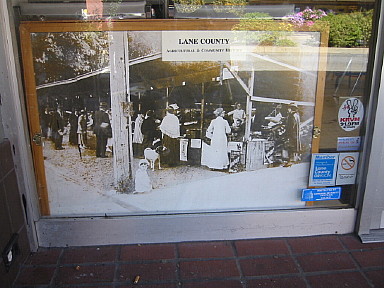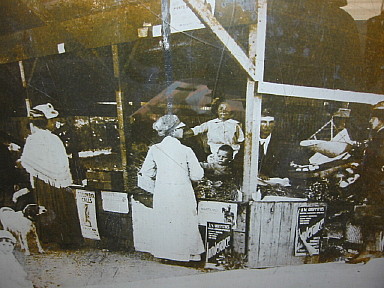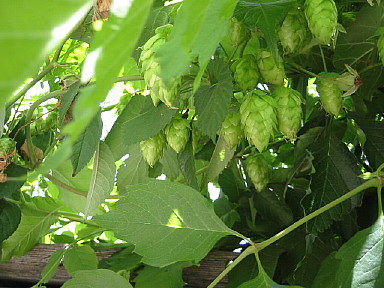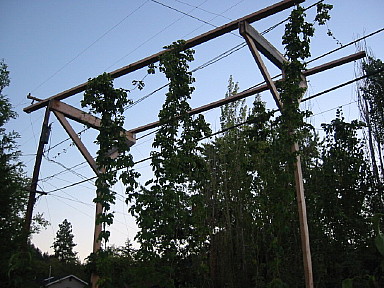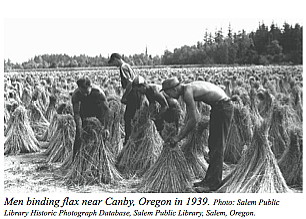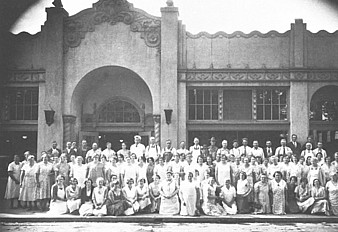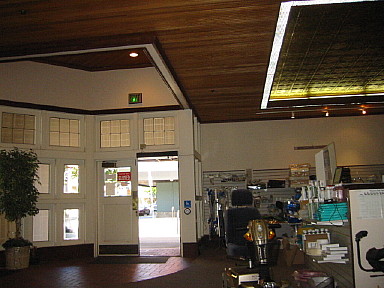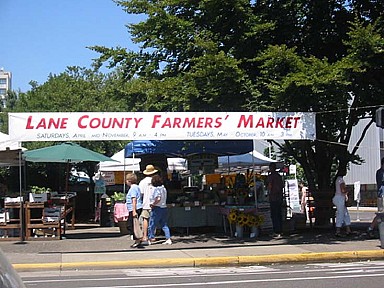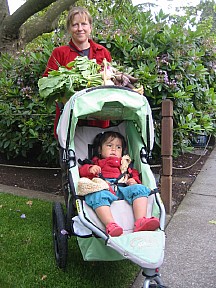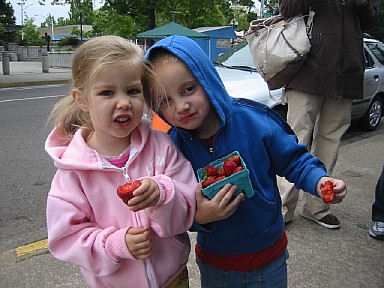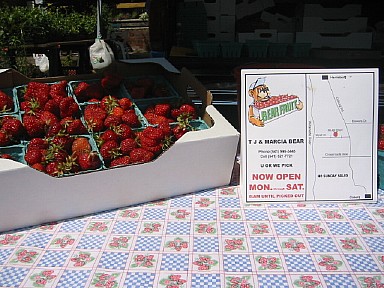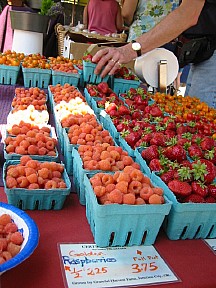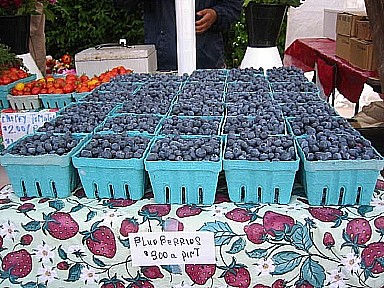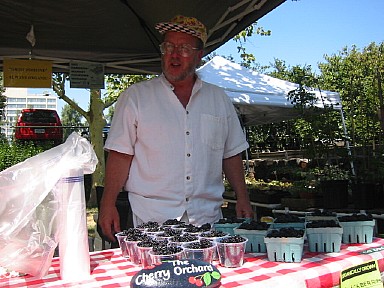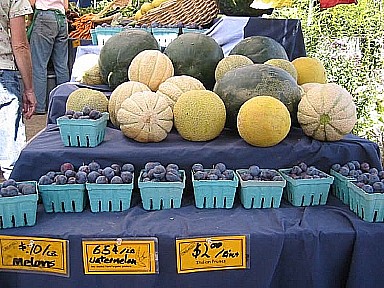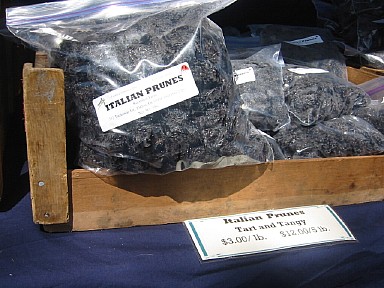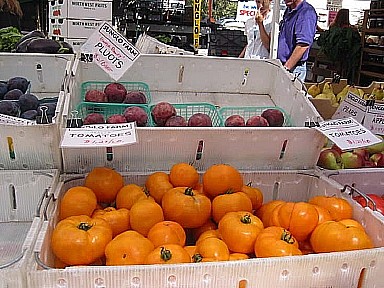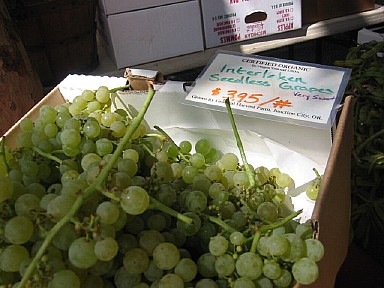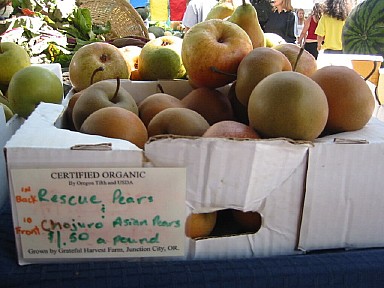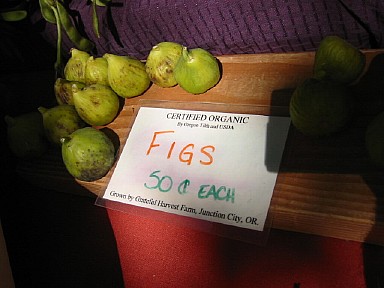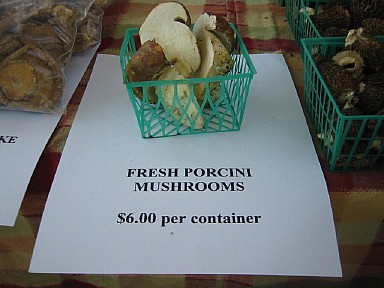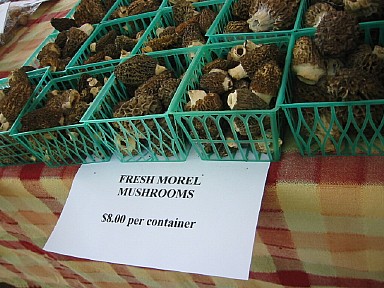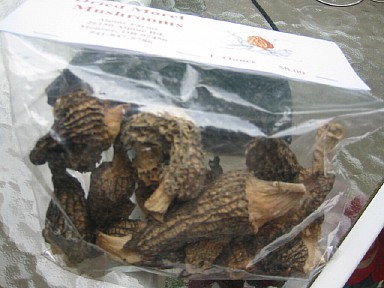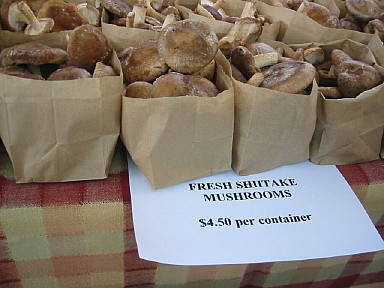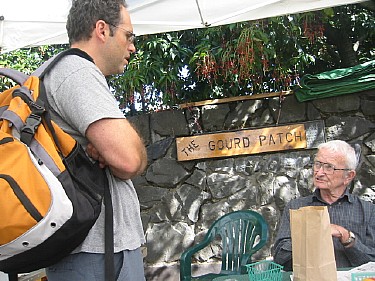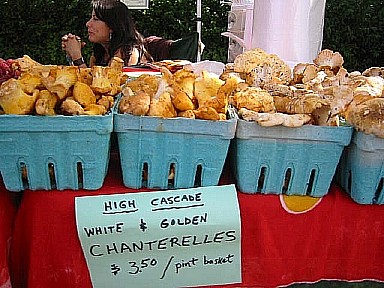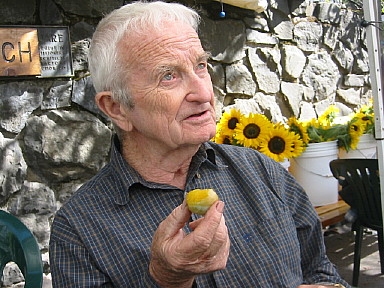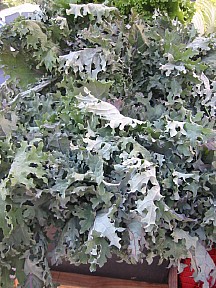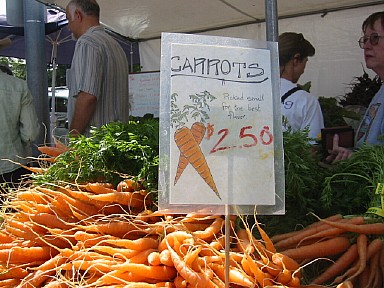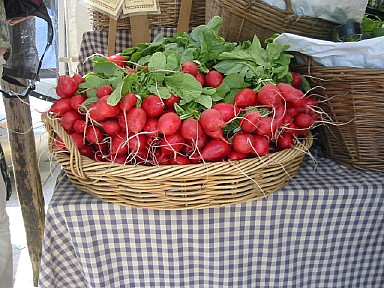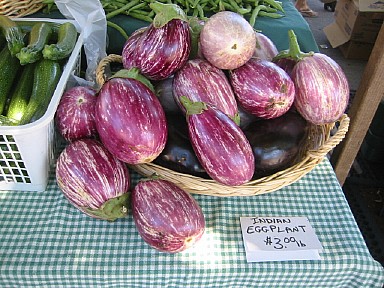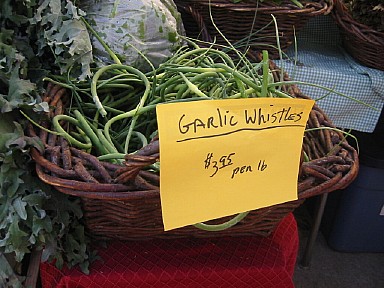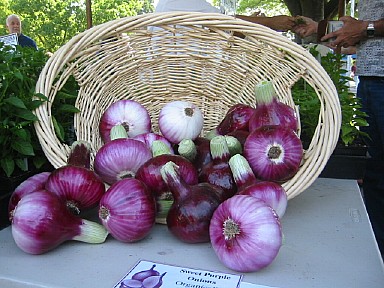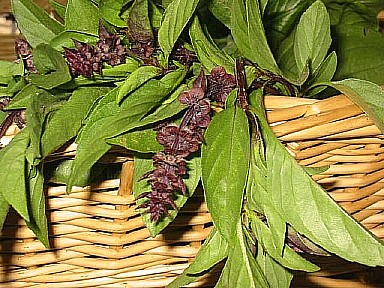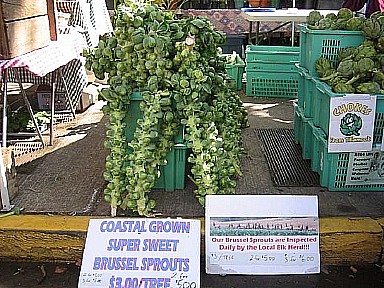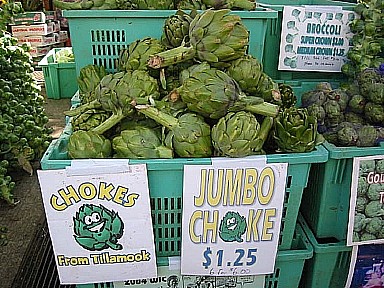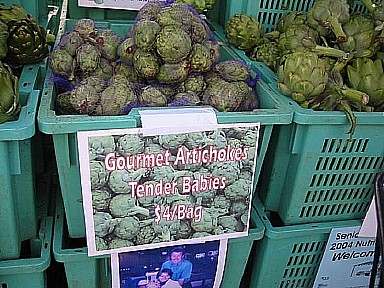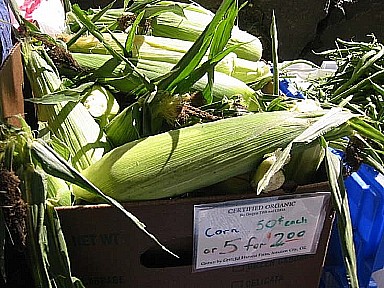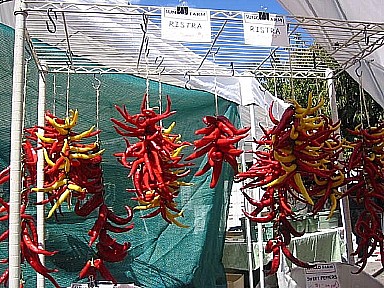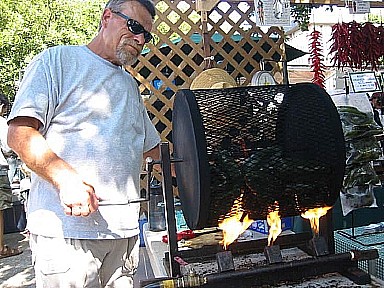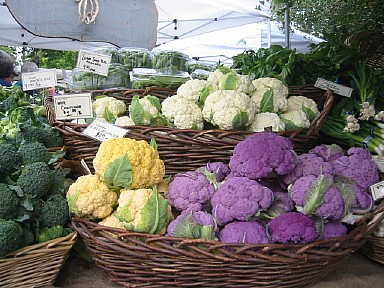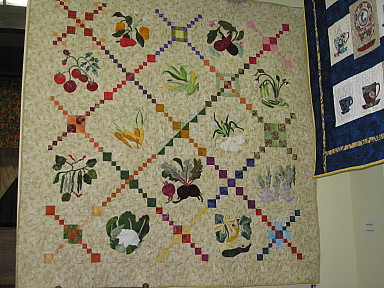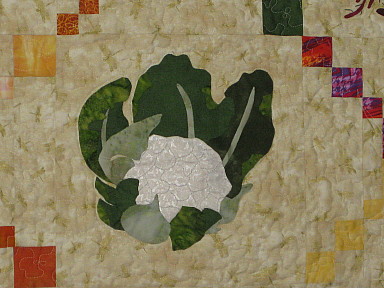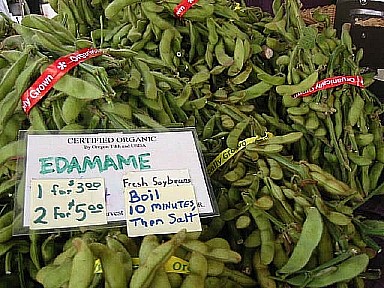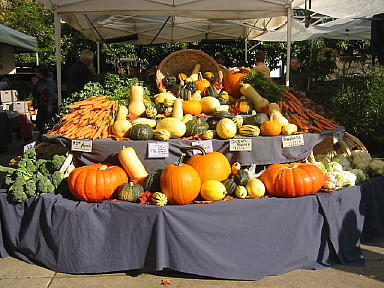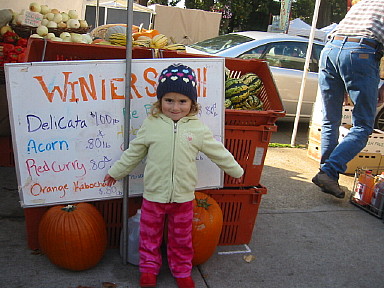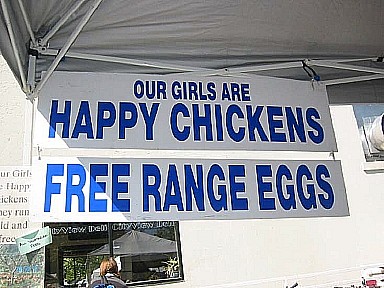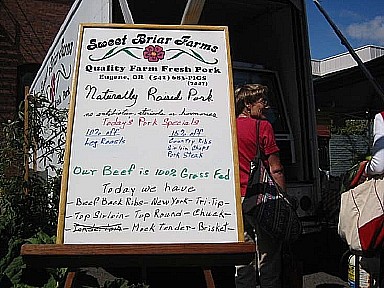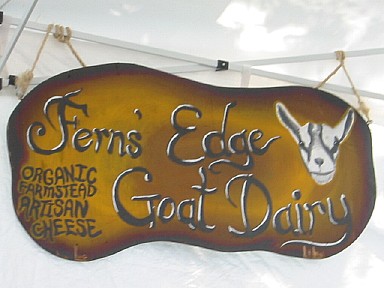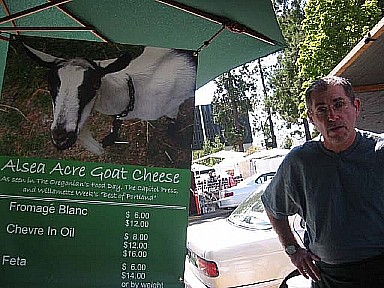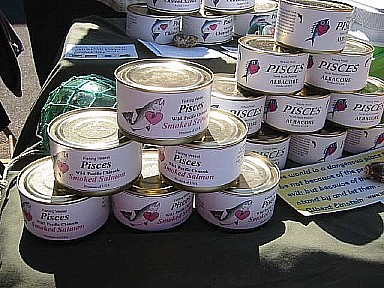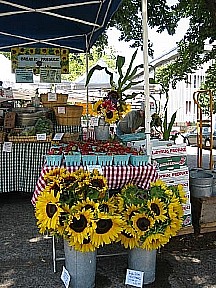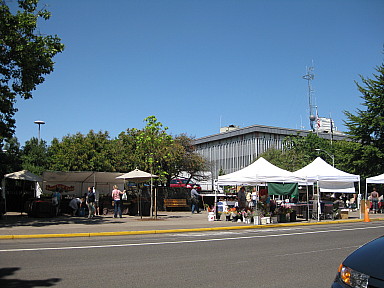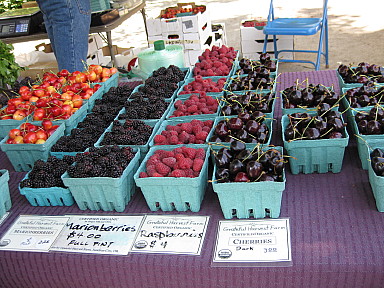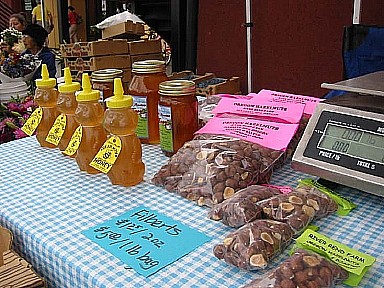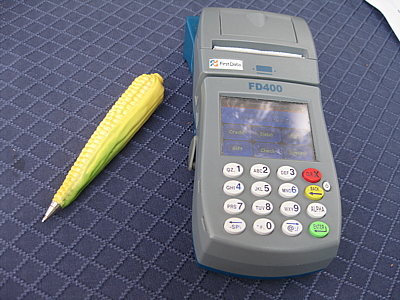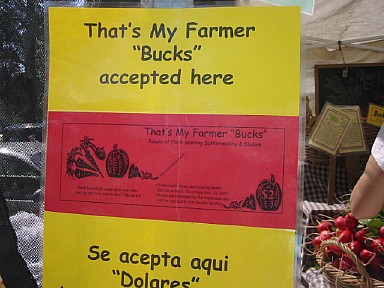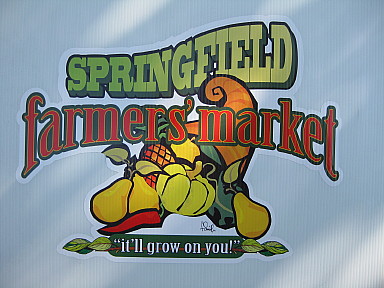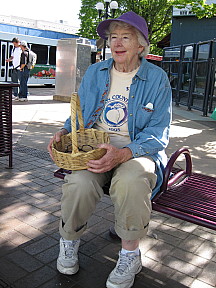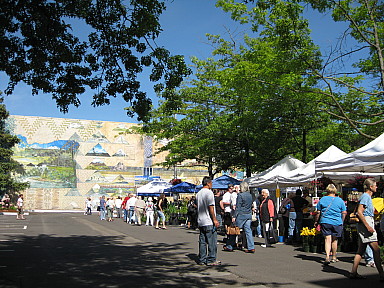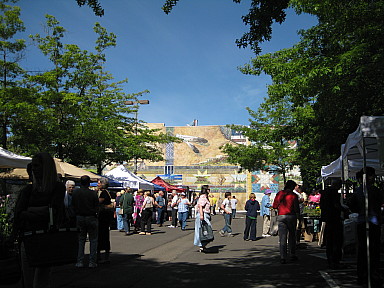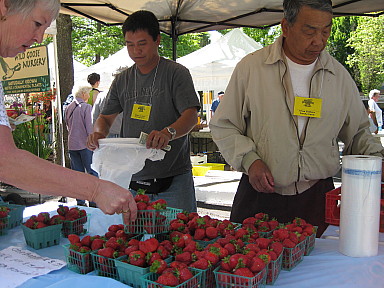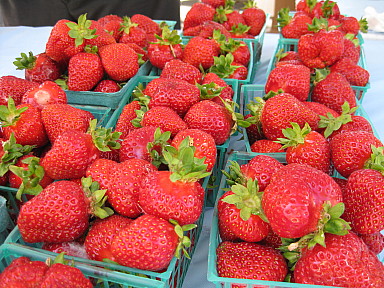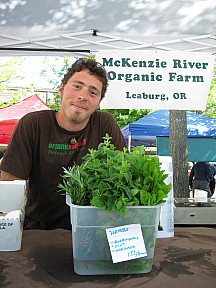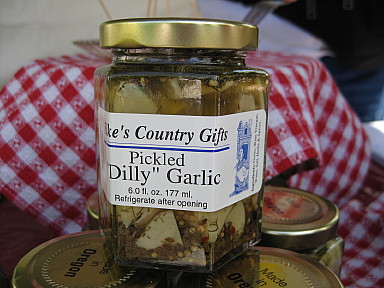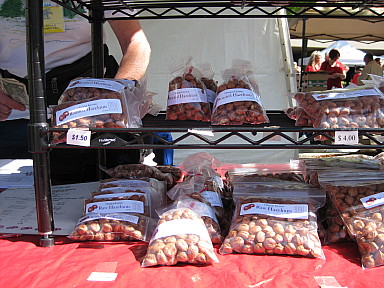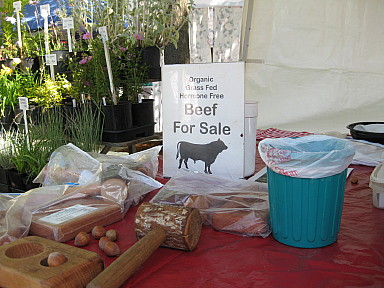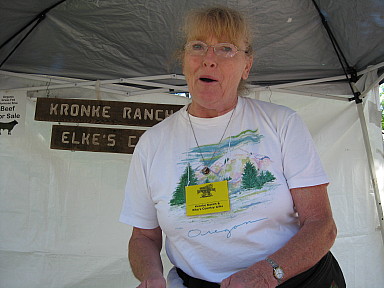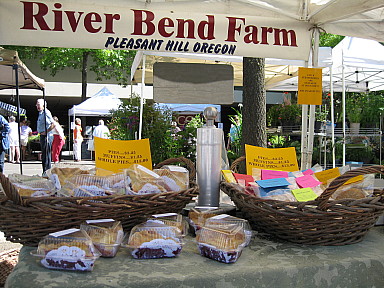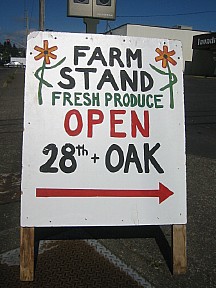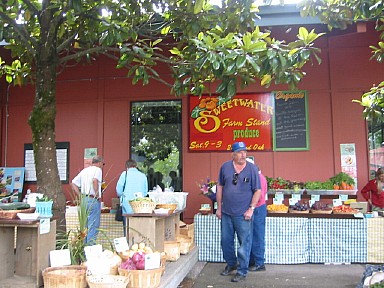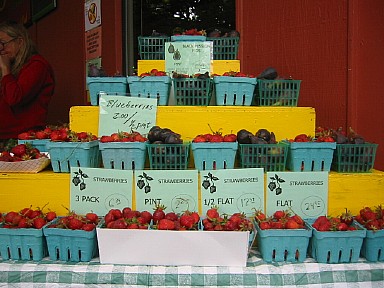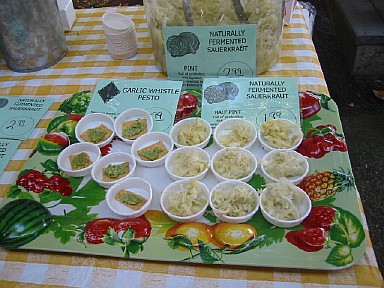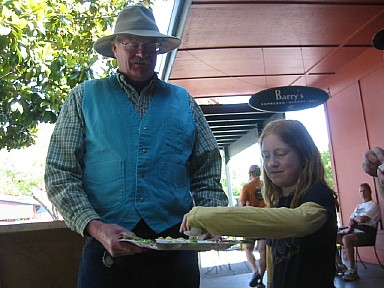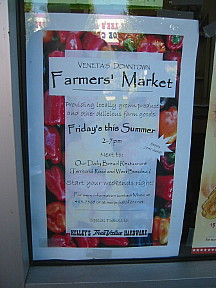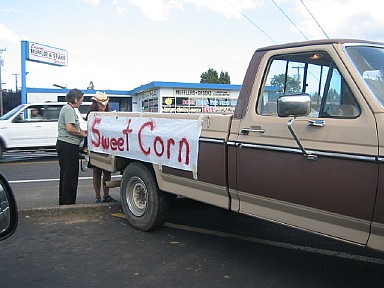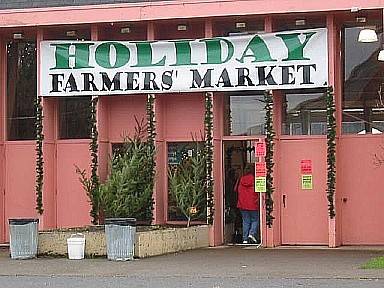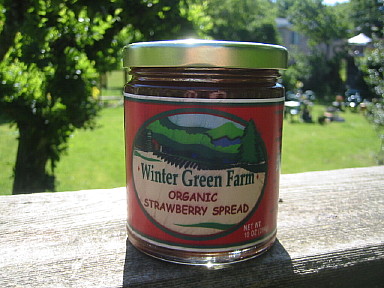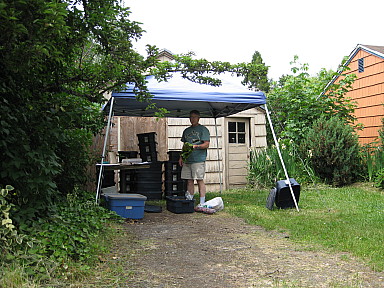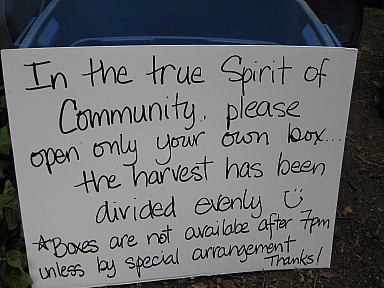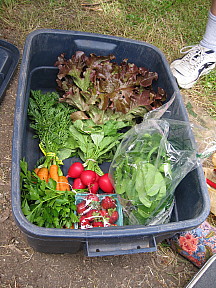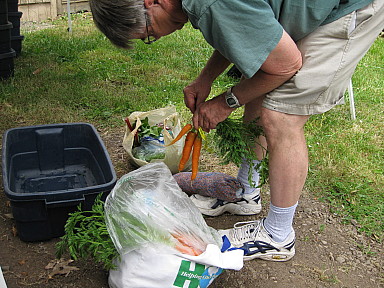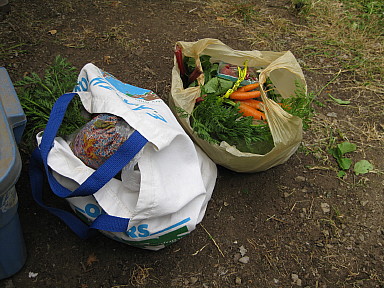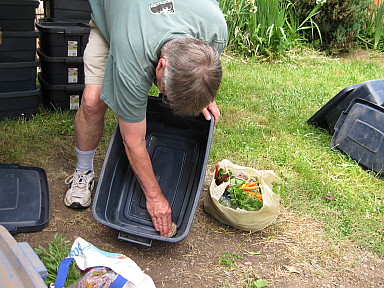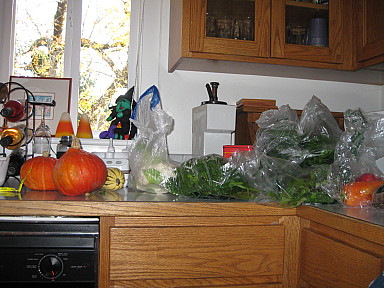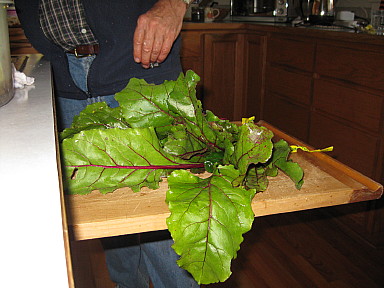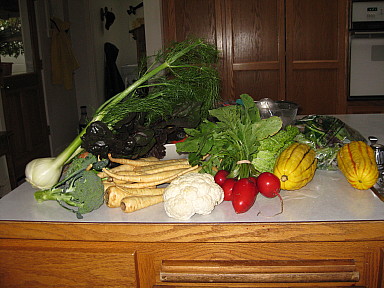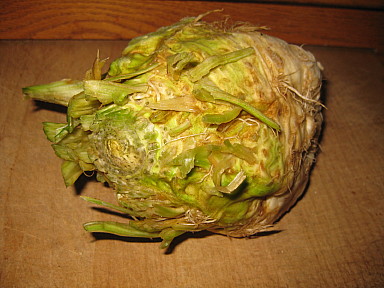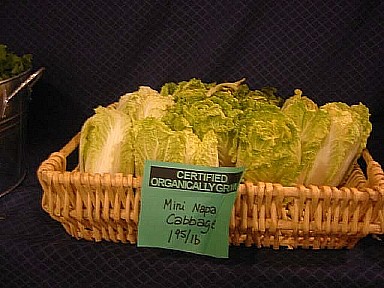
|
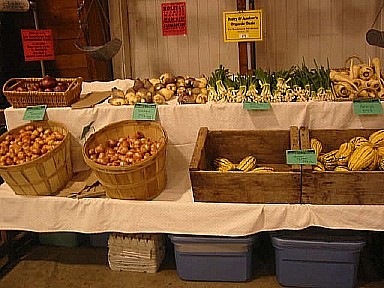
|
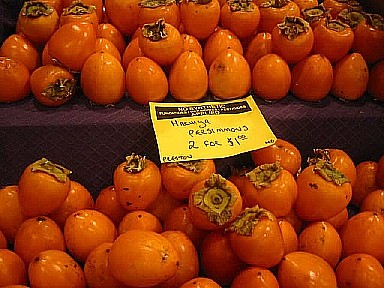
|
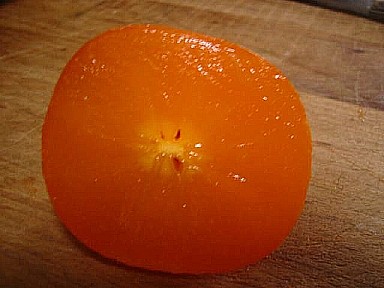
|
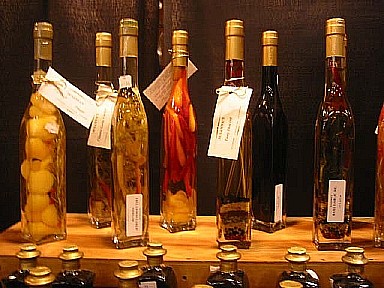
|
5. CSAs (Community Supported
Agriculture)
Local farms operating as CSAs (Community Supported
Agriculture) sell "shares" to members before the
start of the growing season. Farmers get cash flow
to start the season without going into debt.
Households then receive a weekly box of fresh fruits
and vegetables from about May to October, although
some still operate in the winter.
Willamette Farm and Food Coalition has a directory
of Lane County area CSAs.
Their directory includes information about financial
assistance. For example, some CSAs offer
shares available for sliding scales,
work trades or to purchase with SNAP
[formerly called food stamps] benefits.
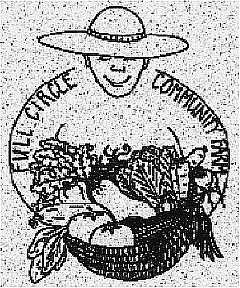
We were a member of
the above CSA for over 10 years.
|
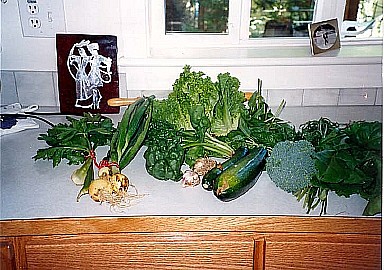
This is a sample
half-share for a week in mid-summer of 1994.
|
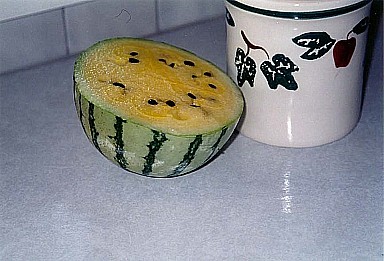
Later in the summer,
our half-share included this absolutely delicious
watermelon.
|
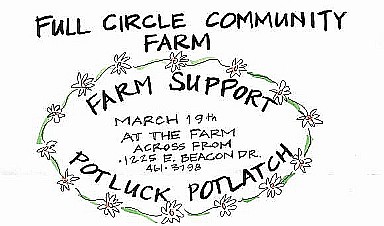
Some CSAs also
include activities to connect with the life of the
farm.
|
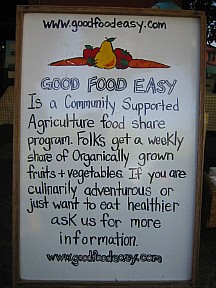
Above is another
CSA.
|
This is the CSA we're now members of.
|
We pick up our week's food at a house just 2 blocks
away.
|
|
|
This is our order.
|
We split it with another family.
|
|
|
|
|
Our CSA has an additional fall harvest. This
one is a full share.
|
I've learned to enjoy beet greens, finding that
they are especially wonderful when they were just
picked that morning!
|
The CSA has helped us try vegetables that weren't
on our menu before. That's fennel on the left
(the white bulb with the feathery top) and parsnips
(the ones that look like white carrots).
|
And that's celeriac.
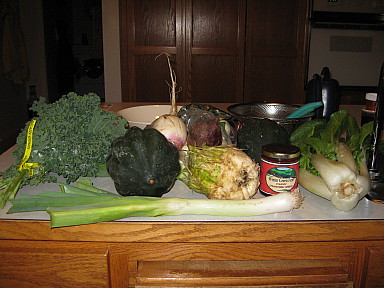
That's kale on the left and bok choy on
the right.
|
The Deck family has a CSA providing grass-fed beef,
pork and lamb, pastured poultry (meat and eggs) and
dairy products.
Their farm follows the principles of Joel Salatin
and and his Virginia Polyface Farm, described in
Michael Pollan's book, The Omnivore's Dilemma.
Once the Decks' cows or sheep have finished grazing
a pasture, they are moved out and a “chicken condo”
comes in. The hens spread out over the
pasture, eating the short grass and picking insect
larvae out of the cow pies. While spreading
the cow manure which fertilizes the soil, they are
also eliminating the farm's parasite problem. The
hens lay their eggs in the "condo", making it easy
to collect them.
Deck Family Farm http://www.deckfamilyfarm.com
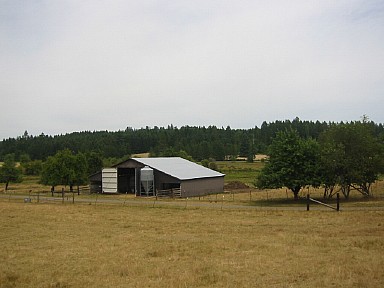
|
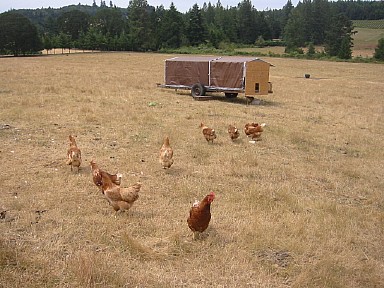
|
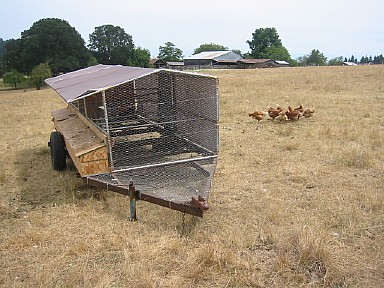
|
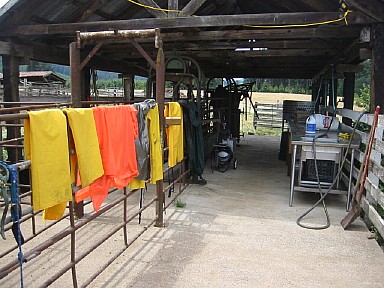
|
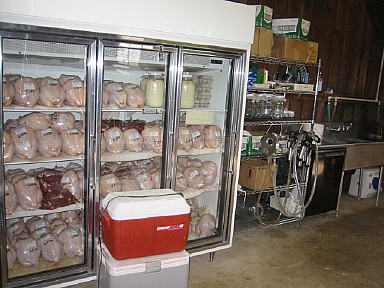
|
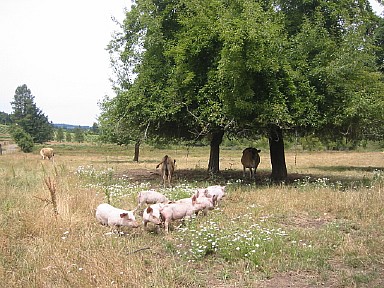
|
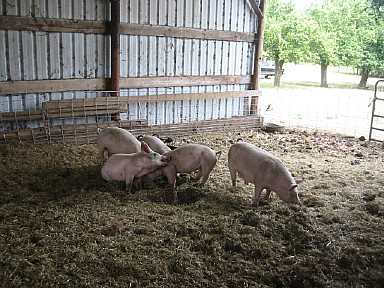
We also joined the Deck Family Farm CSA
and thoroughly enjoy it with my favorite being their
chorizo.
Willamette Farm and Food Coalition's
directory
of Lane County area CSAs has information about
other local CSAs that supply animal products.
|
Laughing
Stock Farm is an animal food CSA (free-range
eggs, fresh pork & lamb). Paul
also had success growing soft winter wheat
in their garden. Paul is part of the Southern
Willamette Valley Bean and Grain Project and he told
me that organic black beans in are being grown in
Veneta. I can't wait to start seeing local black
beans in stores. Paul
gave that 5-gallon jar of wheat.
|

Wheat is hard hard
HARD, even soft winter wheat. Nothing I had
would grind it into flour so we had it as a chewy
breakfast cereal.
Here's an article about a small commercial grain
mill in Brownsville.
|
6. Home Delivery
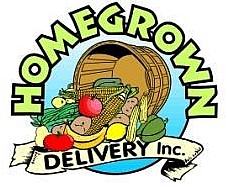
|



